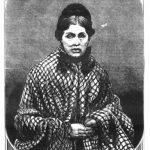In 1919 the country was shocked by a high society murder – dubbed the ‘West End Tragedy.’ Major Miles Seton, of the Australian Medical Corps, was shot and killed by Lieutenant-Colonel Norman Rutherford, a British army doctor, in the palatial surrounds of a Holland Park address.
Using articles and photographs from the pages of the British Newspaper Archive, we explore this sad crime, which took place just a few months after the end of the First World War.
Want to learn more? Register now and explore The Archive
Lieutenant-Colonel Rutherford, like many other men at the time, had newly returned from France in the January of 1919. By all accounts, he was suffering from depression, and this soon spiraled into a jealous rage, as it seems he believed that his wife, Alice, was having an affair with one Major Miles Seton.
Major Seton was staying with his cousin Sir Malcolm Seton at 13 Clarendon Road, Holland Park, when Lieutenant-Colonel Rutherford visited. Sir Malcolm recalled his cousin to be in good spirits, but soon after Rutherford’s arrival he heard ‘four or five pistol shots in rapid succession.’ Sir Malcolm ran downstairs to hear the groans of his dying cousin, and to see a ‘curiously-calm’ Lieutenant-Colonel Rutherford standing over the body.
Sir Malcolm remarked to Rutherford, according to the Shipley Times and Express, ‘You have killed Miles,’ to which he replied in a very quiet voice, ‘I only wish I had another bullet for myself.’ It was found by famed pathologist Dr Bernard Spilsbury that Major Seton had suffered from fourteen bullet wounds.
From the Central Somerset Gazette we can learn more of Lieutenant-Colonel Rutherford’s marriage to Alice. Describing it as a ‘romance of 18 years ago,’ Rutherford eloped with Alice Roberts, daughter of Sir James Roberts, to Edinburgh. They then moved to South Africa.
But what drove Rutherford to murder? He had apparently found a letter from Seton to his wife upon his return from France. He had been under immense strain whilst at the front, and had been sent home in 1917 due to medical reasons – he had been suffering from insomnia and suicidal thoughts – however, he requested to be sent back soon after. At his trial, his mental state was taken into consideration, and he was found guilty but insane. He was sent to Broadmoor prison, was released in 1928 and later divorced from his wife.









